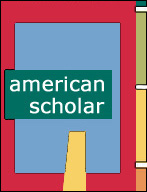English 5508 - Teaching Composition
Beautiful Minds
Jason Hudson
Dr. T--
English 5505
September 16, 2002
The mind is a mysterious facet of our human composition. Some minds are sharp, capable instruments, while others seem more feeble and unable to dwell on lofty thoughts. After centuries of scientific study, a comprehensible understanding of the mind's depths remains inaccessible. However, if it were possible to follow a person's step-by-step process of thought, we would certainly venture into that "impermissible" realm of the mind.
In "Assessing Thinking: Glimpsing a Mind at Work" from Cooper's text, Lee Odell explores some of the possibilities that teachers have in evaluating their students' thought processes through writing. Although much of a student's work can be judged according to grammatical/mechanical structure and form, perhaps a more accurate gauge of proficiency rests between the lines. Odell's chapter on the mind advises the novice instructor on how to interpret, assess, and most importantly, grade his students' contributions. What should each grade reflect? How can following the "mind at work" help the teacher to evaluate a student's progress? Does the grade reflect his ability/inability to communicate effectively? Should each grade reflect the implicit value, regardless of poor mechanics? Odell covers these questions with clarity and gives the instructor firm footing in the classroom.
Thinking is a complex process, and cannot be measured accurately by any means. According to Odell, however, when we consider the writing process, the working mind is perceived to a degree. Odell says, "writing [is] an act of discovery, an act of constructing meaning" (Cooper 7). This statement underscores two distinct ideas regarding the writing process: discovery and construction. When the teacher reads a text from a student, she is also observing certain mental markers that lead the student through to his conclusion or end.
First, when we use the word discovery, we may think of anything ranging from scientific advancement, a geographical conquest, or even a pirate's treasure at the bottom of the ocean. In such situations, the act of discovery is a process. Columbus didn't wake up one morning and decide to sail to an unknown world. He carefully studied maps from the time he was a young man, and decided that he could reach Asia faster and more economically by traveling west. His discovery in 1492 was the result of time and strategic planning. In the same way, when we put ideas on paper we gradually gain ground based on new information, prior knowledge, personality, biases, etc. Just as the events prior to Columbus landing on Watling Island were transcribed in a captain's log, the trail of emerging ideas throughout the writing process becomes apparent.
Second,in order to construct anything of value, we need at least two things: materials and tools. How did Westminster Abbey come to stand in London? Workmen used cut stone and masonry. As we consider the construction of meaning, we need to look at the materials and tools used for the job. Odell gives the following as necessary tools: exploration, imagination, analysis, speculation, and observation. He sums these up in a single power tool: thought. So, with thought as the creative tool in discovery and construction, students are able to formulate thoughtful products in the classroom setting.
There will obviously be a wide range of competence levels, especially in groups with diverse backgrounds. That is why it is a good idea to get past some of the "surface errors" of an assignment and uncover the process of a student's work (Cooper 13). Often, a text will engage a reader's attention in spite of its grammatical flaws. We see this phenomenon in several examples in the chapter. The narrative entitled, "When We Were Alone" lacks mechanical precision but remains a thoughtful and heartfelt text.
What makes that narrative successful? I appreciate Odell's comments on the student's use of "meaning-making strategies." The student here is speaking the language of a sincere, needy adolescent who has minimal experience in the world. His grammar reflects who he is as an individual.
Odell makes it clear that a given text cannot reveal an exhaustive journal of every thought during the process of its making. But the idea that we can capture some of our students' ideas by using their work as a map is intriguing to say the least. What an invaluable tool this can be if we can tap into our students' mental tendencies.
Following a writer's logical patterns will not only give us ideas on how to shape our own students' developments, but might also reveal how certain classics in literature are successful. We may glimpse into the minds of the greatest writers of history, asking thus, "Why did Mary Shelley decide to make Frankenstein's monster turn out to be a diabolical fiend?" or "What made Melville feel compelled to put so much anatomical information about whales in Moby Dick?" or "Why did Joyce or Salinger use the language they did?" Regardless of how we explore the idea of tapping into the writer's mind, the possibilities for better understanding the human psyche and improving our knowledge of the mysterious mind are endless. It seems that from the mind comes thoughtful communication, and through written communication comes a mind at work.
